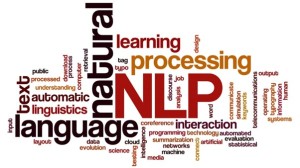
AI language models and their capabilities in imitating human communication
AI language models are foundational to a still-ongoing revolution in language and computer science . Large Language Models (LLMs) like ChatGPT and DALL-E are trained to understand, generate and interpret text that closely resembles human language. They have managed to permeate daily life and transform public consciousness on the potential of Artificial Intelligence.
This blog post aims to synthesize the current applications of AI language models and its limitations.
A large language model (LLM) is an AI algorithm that is trained with extremely large data to understand, summarize, generate and predict new content. All language models are first trained on a set of data, and then use it to infer relationships and then generate new content based on the trained data.
A LLM usually has at least one billion or more parameters(term for the variables present in the model on which it was trained). LLMs use transformers( transformer neural networks). A large number of parameters and the transformer model enable LLMs to understand and generate accurate responses rapidly, which makes it ideal for a large number of applications.
The training usually starts with unsupervised learning on unlabelled data and the model starts establishing relationships between words. The next procedure to follow is training and fine-tuning with a form of self-supervised learning. At this point some data has been labelled, assisting the model to identify different concepts with more accuracy.
Next, the LLM goes through the transformer neural network process. The process involve tokenization and embedding. Tokenization breaks down a text into smaller components called tokens, that are words or phrases. Embedding converts token into numerical vectors.
The self-attention mechanism and encoding is also necessary to be able to process language and generate text that is coherent to a human reader. The primary uses of LLMs include text generation on any topic that was used in training, translation between the languages they have been trained in, content summary, rewriting content, classification and categorization, sentiment analysis( helping users understand the motif of a text or piece of content) and the very popular chatbots.
In short, these models enhance human-computer interactions and are growing in scale and complexity, typically boasting hundreds of billions, or even trillions, of parameters. They are able the predict subsequent words or phrases in a sequence with striking accuracy.
Well-known examples of such models include OpenAI’s GPT-3 and GPT-4. GPT-3( with 175 billion parameters) can be used to write essays, answer questions, and even write stories or poetry. Making predictions or generating text without task-specific training is known as zero-shot learning. GPT-4 has even more parameters which enables a higher standard of quality and coherence.
AI language models have shown excellency at natural language processing (NLP) and natural language generation (NLG). NLP involves understanding and interpreting human language, while NLG is about generating coherent text that is relevant to the context.
These language models are becoming of great use to businesses, who can use sentiment analysis tools to process vast amounts of text data to gauge sentiment ,public satisfaction, and trends. Language models have also made information more accessible and easier to extract, since they can condense large volumes of text into concise summaries. They can thus aide in information extraction and content curation.
Advanced AI language models can break down language barriers and enable effective communication across the board. Writers, marketers, creators and artists have found AI language tools to be useful in content creation, by suggesting ideas, generating text, and streamlining the creative process.
There are still important limitations involved in the use of language models. It is hard to deny that the development costs are significant, since LLMs require large quantities of processing graphics to run. The operational costs for a host organization, even after the training and development period can still be high. Like machine learning algorithms as a whole, LLMs are dependent on data quality used in the training process: if it happens to be incomplete or inaccurate, the AI language model may produce subpar results.
A big limitation that one discovers fast when using chatbots is that they unable to access specific websites or analyse offers directly, as they rely on the data they have been trained on. This means that they may not always provide the most up-to-date or accurate information.
Users would like to know how LLMs generate a specific result, which is not possible. LLMs provide inaccurate responses that are not based in trained data. These incidents are called hallucinations.
The billions of parameters involved make modern LLMs exceptionally complicated technologies that can be hard and tiresome to troubleshoot.
It is of great concern to researches that AI language models can exhibit biases present in their training data, leading to ethical concerns. These biases might reinforce gender or racial stereotypes. Another downside might be data privacy and security concerns. Sensitive information can be processed and generated.
Context still remains challenging to AI language models even though great progress has been made. If language is nuanced or ambiguous, they are less likely to come to the correct conclusion.
A potential downside is an over-reliance on AI in human communication, where users may defer critical thinking to AI-generated responses, impacting genuine human interaction.
Thanks to AI language models, new paths have emerhed in communication, creativity, and information processing. As we celebrate the advantages, it is crucial to face the downsides with responsibility and work towards ways of mitigating them.
